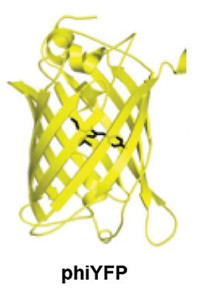Advertisement
Grab your lab coat. Let's get started
Welcome!
Welcome!
Create an account below to get 6 C&EN articles per month, receive newsletters and more - all free.
It seems this is your first time logging in online. Please enter the following information to continue.
As an ACS member you automatically get access to this site. All we need is few more details to create your reading experience.
Not you? Sign in with a different account.
Not you? Sign in with a different account.
ERROR 1
ERROR 1
ERROR 2
ERROR 2
ERROR 2
ERROR 2
ERROR 2
Password and Confirm password must match.
If you have an ACS member number, please enter it here so we can link this account to your membership. (optional)
ERROR 2
ACS values your privacy. By submitting your information, you are gaining access to C&EN and subscribing to our weekly newsletter. We use the information you provide to make your reading experience better, and we will never sell your data to third party members.
Environment
Science Concentrates
March 7, 2005
| A version of this story appeared in
Volume 83, Issue 10
A starburst-shaped heterometallic compound that incorporates six gadolinium ions into a relatively small space could find use as a novel contrast agent for magnetic resonance imaging (MRI) for specialized applications, such as cell imaging (Angew. Chem. Int. Ed. 2005, 44, 1480). To pack all those Gd ions into a modestly sized molecule, Éva Tóth, André E. Merbach, and colleagues at the Swiss Federal Institute of Technology, Lausanne, designed a novel ligand (L), which incorporates a 2,2´-bipyridine group for binding Fe2+ and two poly(aminocarboxylate) substituents for binding Gd3+. The ligand self-assembles along with Fe2+ and Gd3+ into the metallostar, [Fe{Gd2L(H2O)4}3]4-, (shown) with iron (light blue) at its core and gadolinium (yellow) at the tips of the metallostar's six arms. According to the authors, the compound has "the highest relaxivity per molecular mass ever reported for a Gd3+ complex." This property makes the molecule a good candidate for use as a contrast agent in imaging single cells by MRI because the metallostar could be delivered into a lone cell without destroying the cell.
Cholesterol is an important component of cell membranes. This lipid also plays a key cellular role outside of cell membranes, according to cell biologists at the University of Texas Southwestern Medical Center (Science 2005, 307, 1472). Richard G. W. Anderson, Ping-yuan Wang, and Jian Weng show that outside of lipid membranes, cholesterol regulates the assembly of a cytosolic multiprotein complex that controls an important cell-signaling pathway. This multiprotein complex contains a cholesterol-binding protein known as OSBP, as well as two different protein phosphatase enzymes. The intact complex is required to properly dephosphorylate a key signaling protein known as ERK, and cholesterol is necessary to keep this complex together: When cellular cholesterol levels are lowered, the complex falls apart and phosphorylated ERK builds up, Anderson's team notes. They suggest that other lipids might regulate the assembly of cell-signaling complexes, too--presumably via lipid-binding scaffolding proteins similar to OSBP.
Come this fall, Louisiana Tech University plans to launch what it says will be the nation's first undergraduate degree in nanosystems engineering. The Louisiana Board of Regents approved the degree late last month. Stan A. Napper, dean of Louisiana Tech’s College of Engineering & Science, explains that nanosystems engineering concerns the application of basic chemistry and physics to the analysis and design of devices and systems with nanoscale features. Students in other engineering disciplines at the university will also be introduced to nanosystems concepts. "We want all our students in all of our degree programs to be exposed to and have some knowledge of nanosystems," Napper says. Demand for engineers and scientists trained in nanotechnology is expected to blossom, he adds. "There's definitely a national need that we are responding to." Nanosystems will be useful beyond "so-called nanotechnology companies," Napper notes. "So it's important for us to train engineers to go into not only nanotechnology but also traditional industries such as chemical processing, oil and gas, and manufacturing."
The nucleotide radical shown, generated selectively in a synthetic DNA, efficiently cross-links to its complement nucleotide, a new study shows (J. Am. Chem. Soc., 2005, 127, 3692). A number of anticancer drugs, including mitomycin C, owe their cytotoxity to the ability to form DNA interstrand cross-links. The finding, by In Seok Hong and Marc M. Greenberg of Johns Hopkins University, presents a new path for designing anticancer agents. Because this nucleotide radical is formed during irradiation of DNA, the finding also helps to explain how cancer cells are killed by radiation therapy. That the cross-link is formed with the complement nucleotide is unusual and potentially also of therapeutic importance. Cells probably repair cross-links, but when the cross-link is between complement nucleotides, the repair might lead to loss of information and could result in even more damage, Greenberg thinks. "This is something we need to investigate," he says. For now, "we have shown a very efficient pathway for forming cross-links," he adds. "You can now imagine how an organic chemist might ask, 'How can I generate this radical in a manner that could be more compatible with cellular conditions?' "
Breast milk of U.S. nursing mothers holds unexpectedly high levels of perchlorate, researchers at Texas Tech University report. The contaminant, a component of solid rocket fuel, has been detected in U.S. drinking water and some foods. It competitively inhibits the transport of iodide, which is important for neural development. The scientists looked at perchlorate levels in cow's milk and human milk from states across the U.S. Concentrations in breast milk averaged five times higher than those in dairy milk, says lead author Purnendu K. Dasgupta (Environ. Sci. Technol., published online Feb. 22, http://dx.doi.org/10.1021/es048118t). The authors estimate that breast-fed babies of the sampled mothers drink more than two times the safe dose adopted by EPA on Feb. 18 (C&EN, Feb. 28, page 14). Dasgupta adds that, while perchlorate levels in breast milk are high, iodide levels in breast milk are about one-third what they were 30 years ago. Because perchlorate mainly affects iodide transport, it's the combination of iodide and perchlorate levels that is most meaningful, he says.
Advertisement






Join the conversation
Contact the reporter
Submit a Letter to the Editor for publication
Engage with us on Twitter